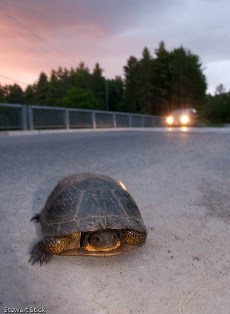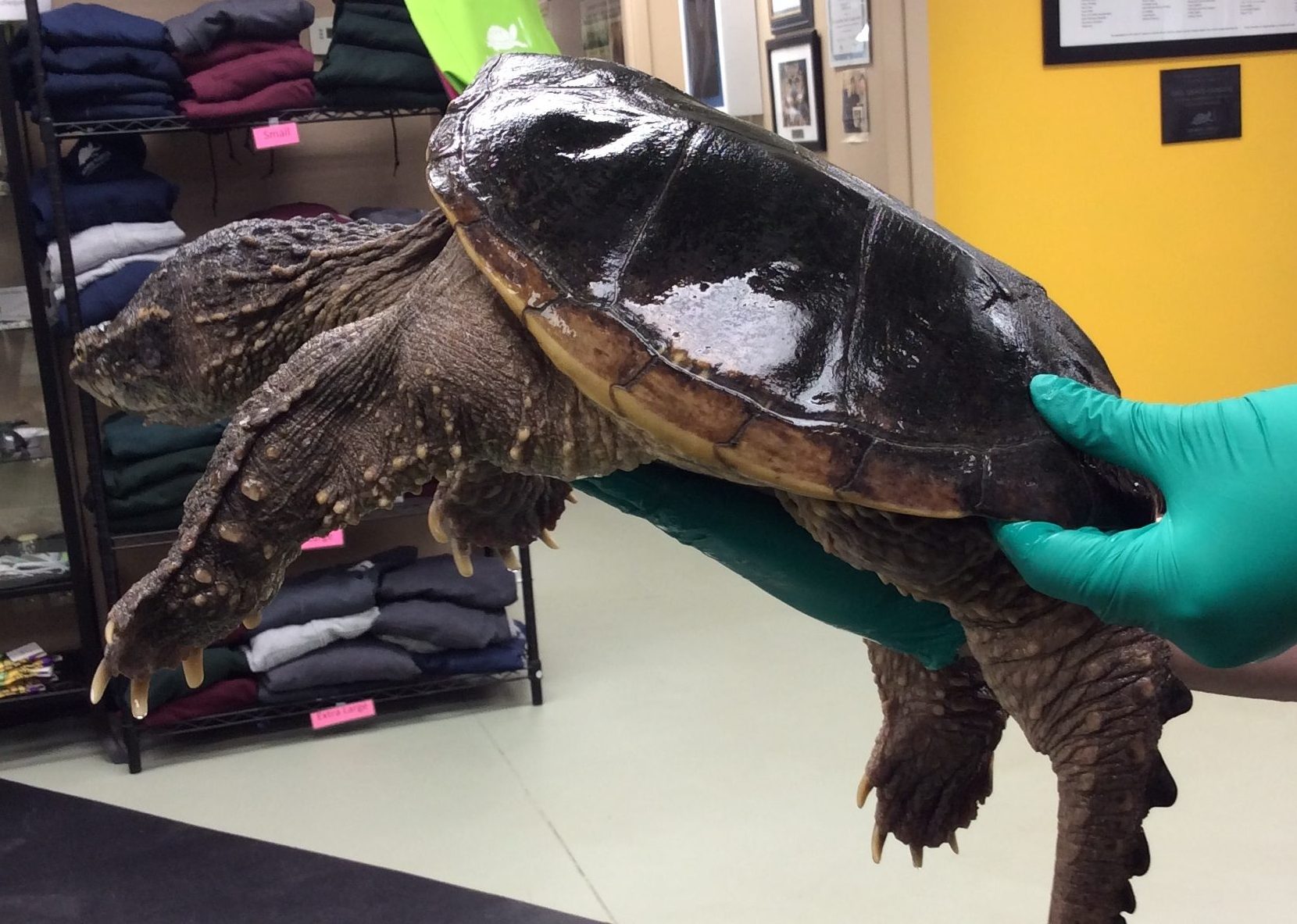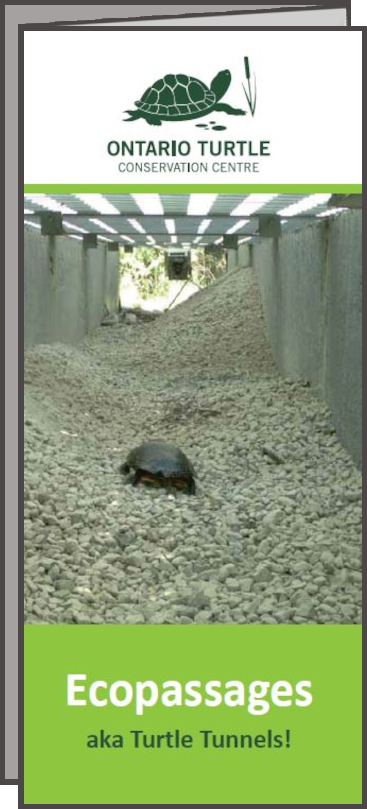Drive Carefully
Over 70% of Southern Ontario’s wetlands have been drained or filled or otherwise converted to other uses. The wetlands that remain are often fragmented by roads.
Although Ontario’s turtles spend most of their time in the water, both males and females travel on land of the spring, summer, and fall. All turtle species need to lay their eggs on dry land. Since roads are everywhere they often need to cross them to get to their nesting sites. About half of the turtles hit by cars are adult females on their way to lay eggs. June is the height of nesting season, but be sure to keep an eye out for turtles crossing roads anytime between April and November!
Unlike other animals that are often hit by cars, turtles move slowly. It is not hard to avoid them if you are driving a reasonable speed and looking far ahead. Not only is driving carefully safer for turtles – it’s also safer for you and your family!

Blanding’s Turtle on the road (photo by S Stick)
Report Your Sightings
Ontario’s reptiles and amphibians are becoming increasingly rare. In fact, three quarters (18 of 24) of Ontario’s reptile species are listed as species at risk. One of the most important things you can do to help conserve these species is to report observations of these animals to monitoring programs such as the Ontario Turtle Tally and the Herps of Ontario project on iNaturalist.
The Ontario Turtle Tally was established by the Adopt-a-Pond program at the Toronto Zoo to monitor the health of turtle populations. Visit their website for information on amphibians and reptiles and their habitats, reports sightings of frogs & turtles, and more!
Have you helped a turtle in some way? Please tell us about it here: Conservation Actions
Help Turtles Cross the Street
Always be sure of your own safety before stopping to help a turtle on the road. If it is safe to do so, gently move the turtle in the direction they are going. Do not handle the turtle any more than is necessary. Once you have moved it across the road retreat a respectful distance if you wish to continue observing it.
Most turtles can be picked up carefully with two hands. But be careful helping a snapping turtle across the road – keep a safe distance from their head as they will snap at you if they feel threatened. Do not handle a snapping turtle unless you feel comfortable doing so.

How to handle a snapping turtle:
- An uninjured snapper can be coaxed across the road using a shovel or a board.
- If you must pick up a snapping turtle by hand, do so by coming behind him, and sliding your dominant hand underneath him, from under the tail, as if you were picking up a tray of drinks, or a pizza box. Stabilize the tail with your non-dominant hand, without pulling on it (see photo below). This should prevent any ability to bite or scratch you. Make sure to hold them well away from your body! A Snapper can reach its midpoint so do not pick it up near its middle.
- Never pick up a turtle by the tail; you may damage its spine.
Other species are easier to pick up (as shown) but even a small painted turtle can give a nasty nip, so be sure to keep your hands away from their head.
Make sure to wash hands, or carry a hand sanitizer with you in the car – do not handle food until you have washed you hands. Turtles have a good relationship with bacteria that we do not! While they may not be sick, they can still pass on bacteria to us that can cause illness in humans.
Print this document and keep it in your car so that you’ll know what to do the next time you see a turtle on the road. Turtle Handling 101

Sign Up

If you know of a road that is particularly dangerous for turtles, you may want to look into putting up a sign to warn motorists to be on the lookout for these slow moving critters. Visit the Toronto Zoo’s Adopt-a-Pond site for more information on obtaining and erecting crossing signs. Please note these are full-sized road signs, and they must be approved and installed by your municipality.
Additionally, the OTCC sells smaller (30 cm by 30 cm) signs you can install on your own property. These can be purchased in person at our gift shop, or from our Online Store.
Ecopassages
If you think there is a problem “hotspot” for turtles on the road in your area, an ecopassage may be the best option to reduce mortality. Ecopassages are structures designed to create safe passage for wildlife to cross roads. For turtles, a safe passage under the road is the most effective. Sometimes an existing culvert can converted into a suitable turtle crossing, while other times an underpass is constructed specifically as an ecopassage. To learn more, including specific steps you can follow, read our Ecopassages brochure.


